How To Make Hawaiian BBQ Chicken Recipe
Hawaiian BBQ Chicken is a delightful blend of sweet and savory flavors that captures the essence of tropical cuisine. This dish is more than just a meal; it’s a cultural experience that brings the vibrant flavors of Hawaii to your table.
Traditionally marinated in a mixture of pineapple juice, soy sauce, and brown sugar, the chicken is then grilled to perfection, resulting in a juicy and flavorful dish.
The sweet tanginess from the pineapple combined with the umami of soy sauce creates a unique taste that has made Hawaiian BBQ Chicken a favorite at gatherings and family dinners.
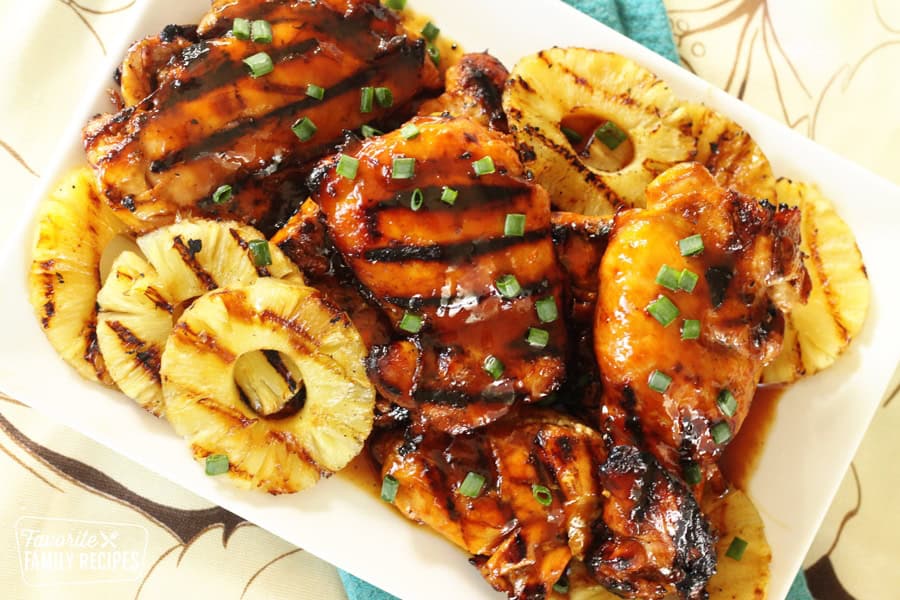
Whether you’re hosting a luau or simply craving a taste of the islands, this guide on how to make Hawaiian BBQ chicken recipe is sure to impress.
Ingredients Needed
Chicken
- 4-6 boneless, skinless chicken breasts or thighs: Thighs are juicier, but chicken breast with bone or without work well too.

Marinade Ingredients
- 1 cup pineapple juice: Adds sweetness and tanginess. Substitute with orange juice if unavailable.
- ½ cup soy sauce: Provides the savory umami flavor.
- ¼ cup brown sugar: Sweetens the marinade. Honey or maple syrup can be used as alternatives.
- 3 cloves garlic, minced: Adds a robust flavor. Garlic powder can be used in a pinch.
- 1 tablespoon ginger, grated: Fresh ginger gives a spicy kick. Ground ginger can be substituted, using 1 teaspoon.
- 2 tablespoons rice vinegar: Adds acidity and balances sweetness. Apple cider vinegar can be used instead.
- 1 tablespoon sesame oil: Gives a nutty flavor.
- 1 teaspoon black pepper: Enhances overall taste.
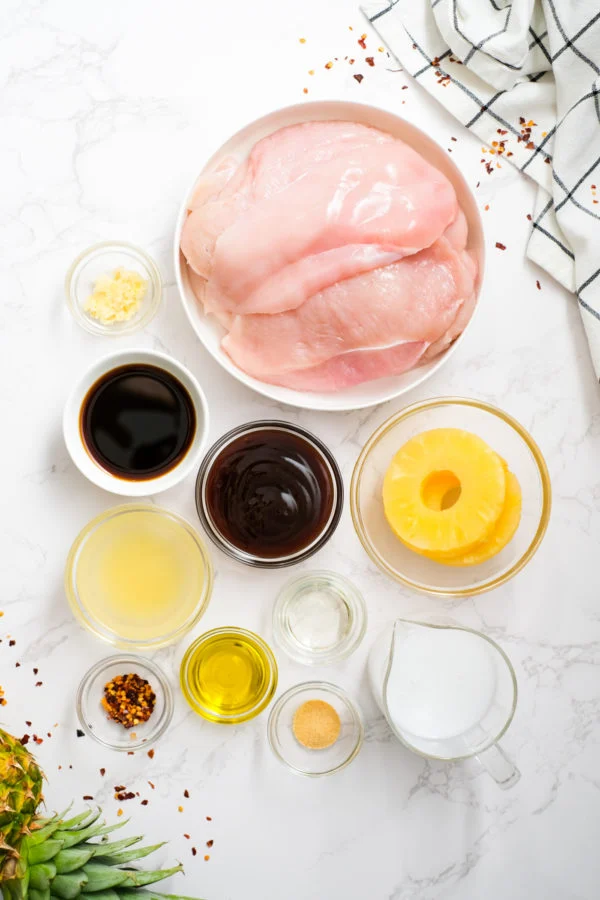
Optional for Garnish:
- Sliced green onions: Adds a fresh, mild onion flavor.
- Sesame seeds: For a slight crunch and visual appeal.
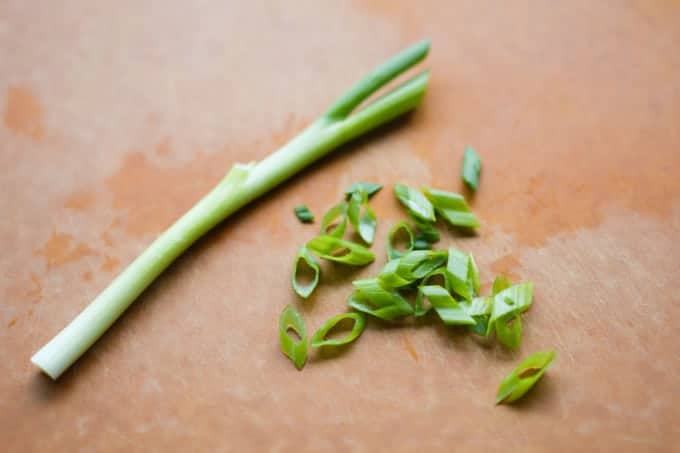
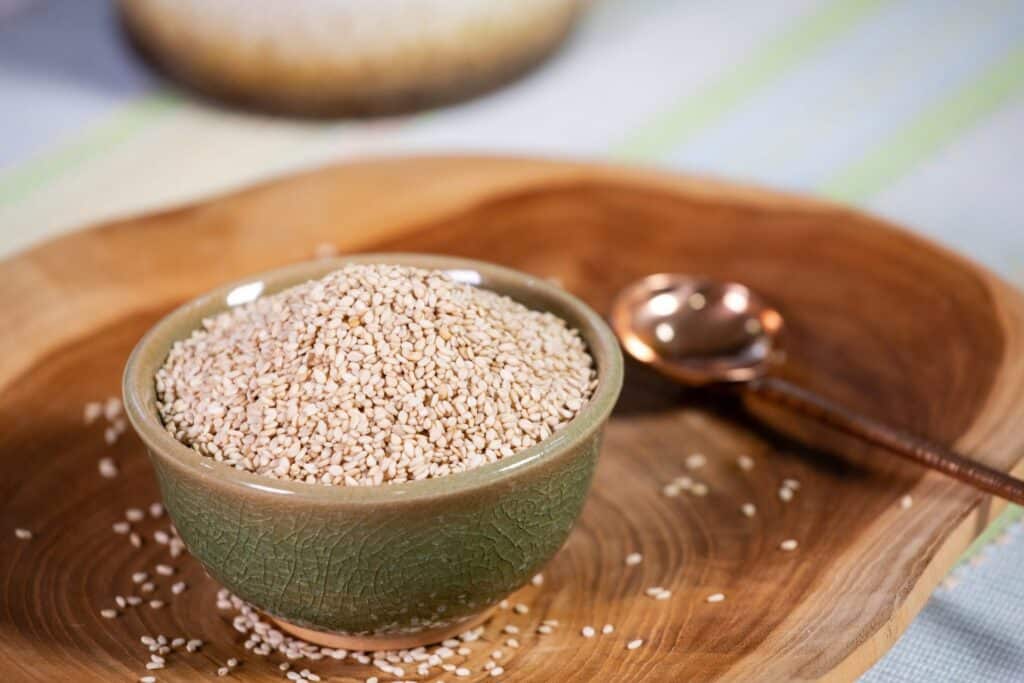
Step-by-Step Cooking Guide
Preparing the Marinade
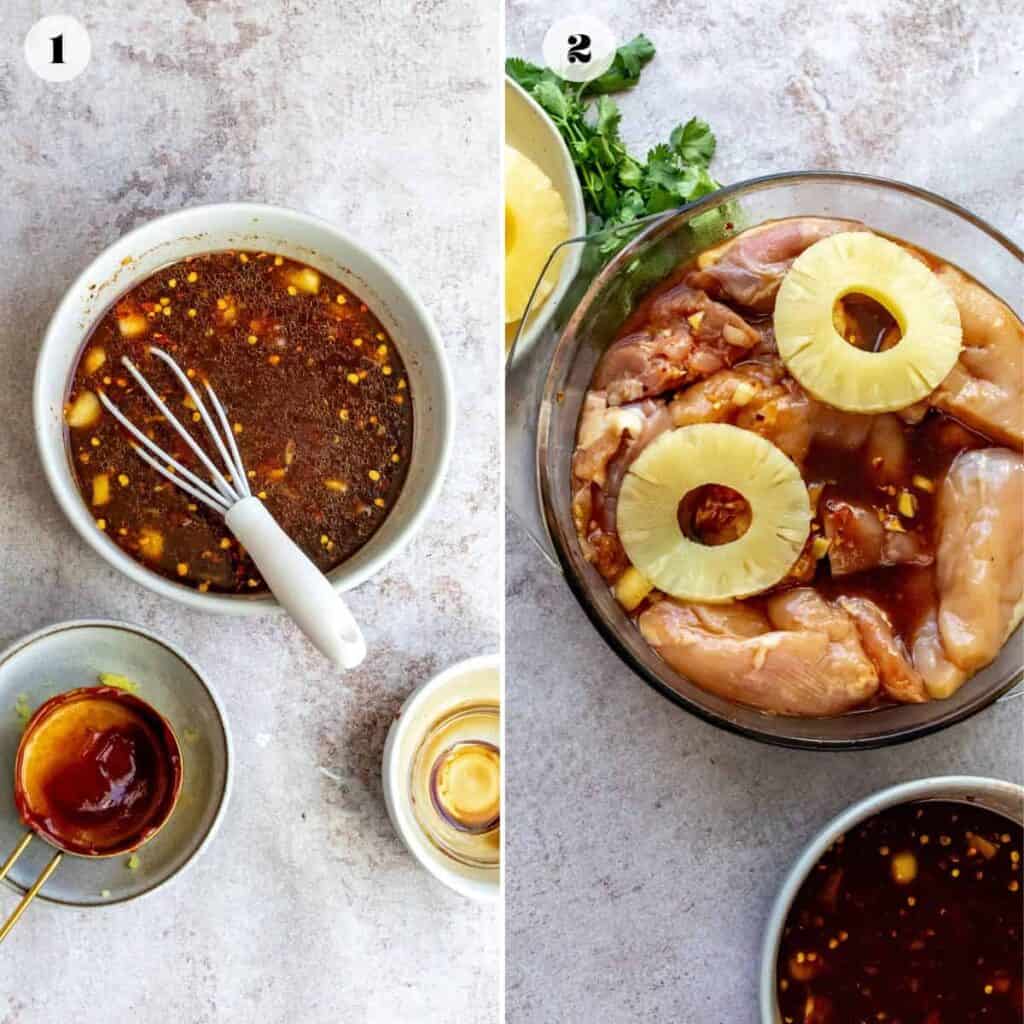
- Combine Ingredients: In a medium bowl, mix 1 cup pineapple juice, ½ cup soy sauce, ¼ cup brown sugar, 3 minced garlic cloves, 1 tablespoon grated ginger, 2 tablespoons rice vinegar, 1 tablespoon sesame oil, and 1 teaspoon black pepper.
- Mix Well: Whisk the ingredients together until the sugar is fully dissolved and the mixture is smooth.
- Marinate Chicken: Place the chicken in a resealable plastic bag or a large bowl. Pour the marinade over the chicken, ensuring each piece is well-coated.
- Rest Time: Seal the bag or cover the bowl and refrigerate for at least 2 hours, preferably overnight. This allows the flavors to penetrate the meat, making it tender and flavorful.
Grilling the Chicken

- Preheat the Grill: Set your grill to medium-high heat. Clean and oil the grates to prevent sticking.
- Remove Chicken from Marinade: Take the chicken out of the marinade, allowing excess to drip off. Discard the used marinade.
- Grill Chicken: Place the chicken on the grill. Cook for 6-8 minutes on each side, or until the internal temperature reaches 165°F (75°C). Avoid moving the chicken too much to achieve nice grill marks.
- Check for Doneness: Use a meat thermometer to ensure the chicken is cooked through but still juicy.
- Rest the Chicken: Let the chicken rest for 5 minutes after grilling. This helps the juices redistribute, keeping the meat tender.
Serving Suggestions
Presentation Tips
Hawaiian BBQ Chicken is not just about taste; it’s also about presentation. Serve the chicken on a large platter garnished with sliced green onions and sesame seeds for a touch of freshness and crunch. You can also add pineapple rings or chunks for an extra tropical flair.
Arrange the chicken pieces neatly and pour a little extra of the BBQ sauce or marinade (that hasn’t touched raw chicken) over the top for added moisture and flavor.
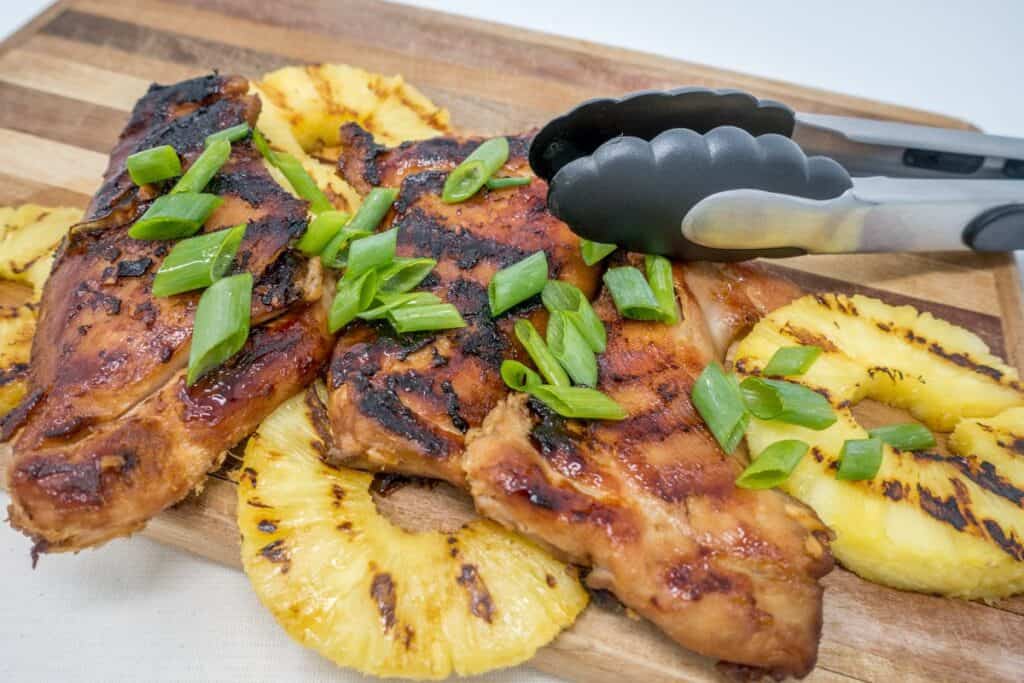
Accompanying Side Dishes
- Hawaiian Macaroni Salad: A creamy, tangy side that perfectly complements the sweetness of the BBQ chicken. Made with elbow macaroni, mayonnaise, grated carrots, and onions.
- Steamed White Rice or Coconut Rice: The perfect base to soak up the delicious marinade. Coconut rice adds a hint of sweetness and richness.
- Grilled Pineapple: Enhance the tropical vibe with sweet and smoky grilled pineapple slices.
- Hawaiian Coleslaw: A crunchy, tangy salad made with shredded cabbage, carrots, and a light pineapple dressing.
- Lomi Lomi Salmon: A traditional Hawaiian side dish made with salted salmon, tomatoes, onions, and fresh lime juice, adding a refreshing and tangy flavor.
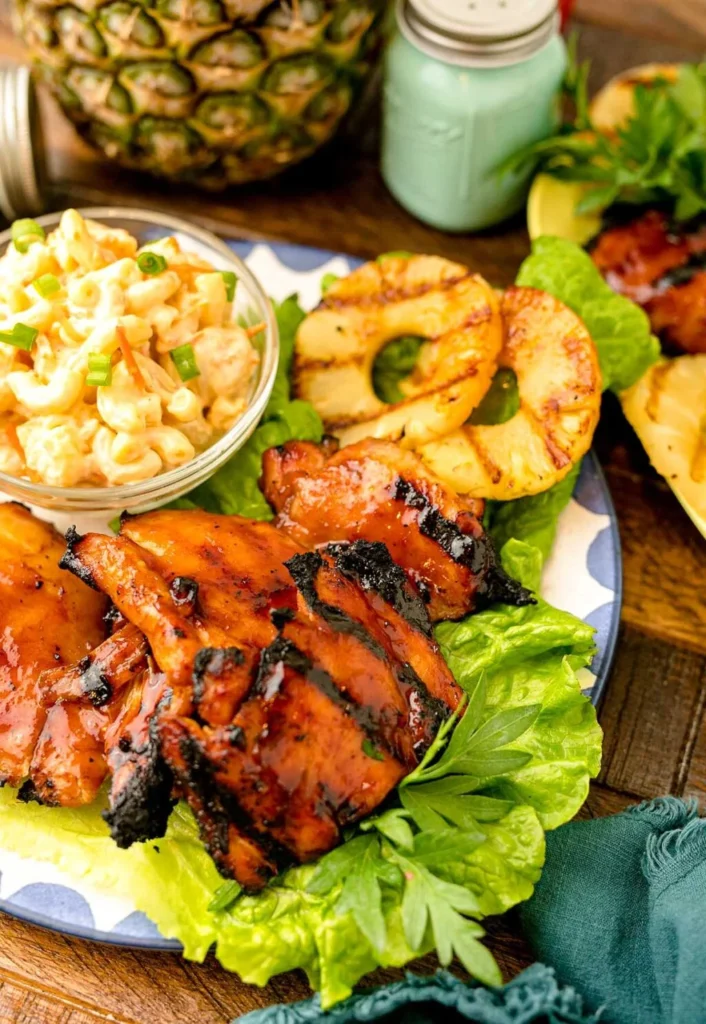
Nutritional Information
Hawaiian BBQ Chicken offers a balance of flavors and nutrition, making it a great choice for a flavorful meal. Here’s a breakdown of its nutritional content and health benefits:
Per Serving (based on 4 servings):
- Calories: Approximately 300-350
- Protein: 30g
- Carbohydrates: 20g
- Fat: 12g
- Fiber: 1g
- Sugar: 15g
- Sodium: 800mg
Health Benefits:
- High in Protein: Chicken is an excellent source of lean protein, essential for muscle growth and repair.
- Rich in Vitamins and Minerals: The marinade ingredients like pineapple juice and ginger provide vitamins C and B6, as well as antioxidants that boost immunity and reduce inflammation.
- Balanced Macros: The dish offers a good balance of protein, fats, and carbs, making it suitable for a variety of dietary needs.
Health Concerns:
- Sodium Content: Soy sauce contributes to a higher sodium content, which may be a concern for those monitoring their salt intake. Using low-sodium soy sauce can help reduce this.
- Sugar: The brown sugar and pineapple juice add sweetness but also increase the sugar content. This can be moderated by adjusting the amounts or using natural sweeteners like honey.
Variations of the Recipe
- Teriyaki Style: Swap out the pineapple juice for teriyaki sauce for a richer, more savory flavor.
- Gluten-Free: Use tamari or coconut aminos instead of soy sauce to make the dish gluten-free.
- Spicy Kick: Add 1-2 teaspoons of Sriracha or chili flakes to the marinade for a spicy twist.
- Vegetarian: Substitute chicken with firm tofu or portobello mushrooms, marinating and grilling them the same way for a vegetarian option.
- Low-Sugar: Reduce the brown sugar or use a natural sweetener like stevia to cut down on sugar content.
Vegan and Vegetarian Alternatives
- Tofu
- Use firm tofu as a substitute for chicken. Marinate it in the same Hawaiian BBQ sauce, then grill or bake until crispy.
- Tempeh
- Tempeh is another great alternative. Its nutty flavor pairs well with the sweet and savory marinade. Slice, marinate, and grill or pan-fry until golden.
- Portobello Mushrooms
- Marinated portobello mushrooms provide a meaty texture. Grill them to enhance their rich, earthy flavor.
- Jackfruit
- For a pulled chicken texture, use young green jackfruit. Marinate and cook it, then shred and grill to caramelize the edges.
Historical and Cultural Context
Hawaiian BBQ Chicken, also known as Huli Huli Chicken, has deep roots in Hawaiian cuisine. The term “huli” means “turn” in Hawaiian, referring to the traditional method of turning the chicken over an open flame.
This dish was popularized in the 1950s by Ernest Morgado, who used a unique marinade blend of pineapple juice and soy sauce, reflecting the island’s multicultural influences, including Polynesian, Asian, and American flavors.
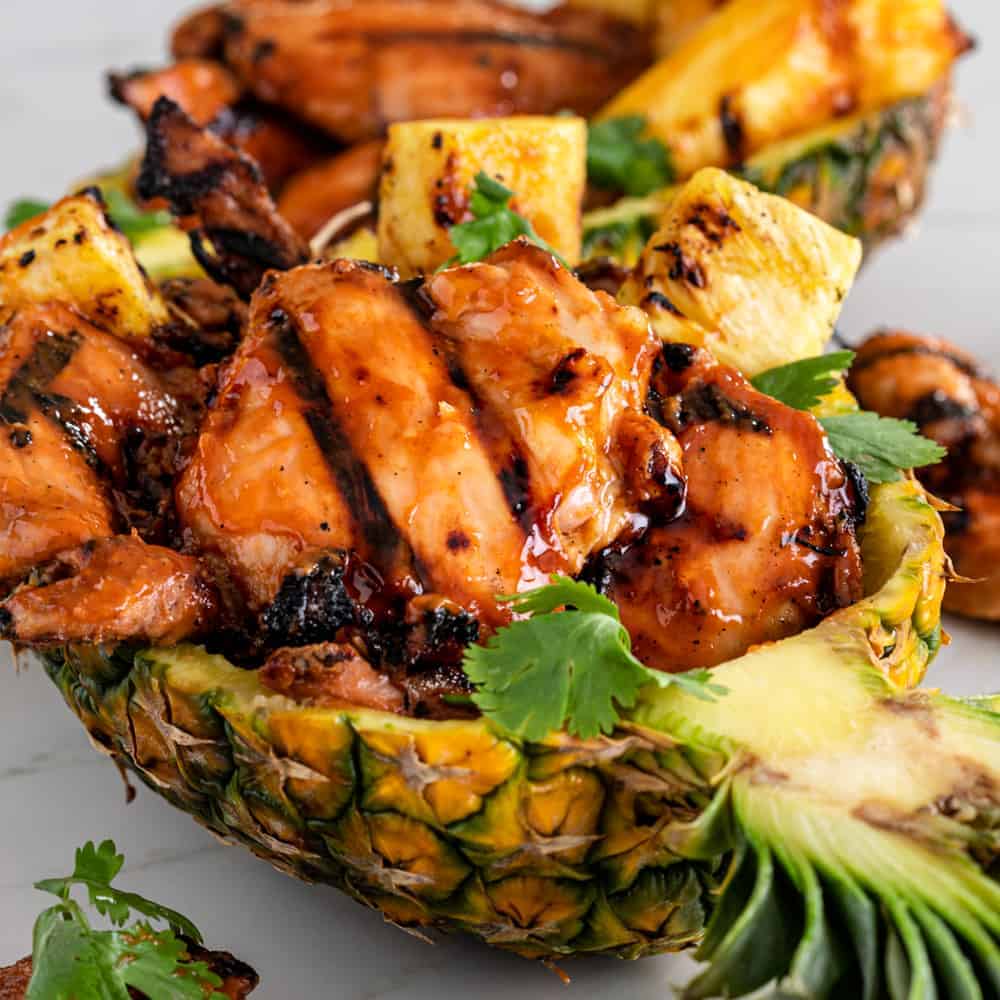
Hawaiian BBQ Chicken became a staple at local gatherings and luaus, symbolizing community and celebration. Its sweet and savory profile captivated taste buds beyond Hawaii, leading to its spread worldwide. Today, it is enjoyed globally, bringing a taste of Hawaii’s rich culinary heritage to diverse dining tables.
User Reviews and Feedback
Hawaiian BBQ Chicken has garnered rave reviews from home cooks and food enthusiasts alike. Here are some quotes from people who have tried the recipe:
Emily R.: “The flavors are amazing! The pineapple juice gives the chicken a delightful sweetness, and the soy sauce adds the perfect amount of umami. My family loved it!”
James T.: “This recipe is a game-changer. The marinade is simple yet so flavorful. I used tofu instead of chicken, and it turned out fantastic!”
Lena M.: “Grilling the chicken gave it such a nice char and smoky flavor. This has become a go-to dish for our summer barbecues.”
These reviews highlight the versatility and broad appeal of Hawaiian BBQ Chicken, making it a favorite for various occasions and dietary preferences.
Disclosure: Our blog contains affiliate links to products. We may receive a commission for purchases made through these links. However, this does not impact our reviews and comparisons. We try our best to keep things fair and balanced, in order to help you make the best choice for you.




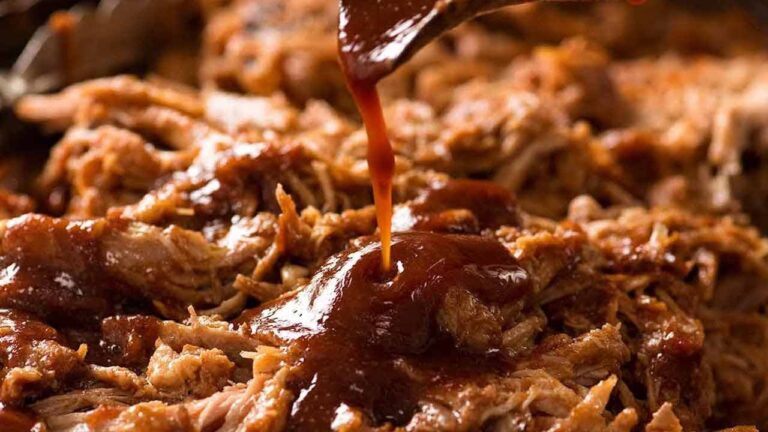
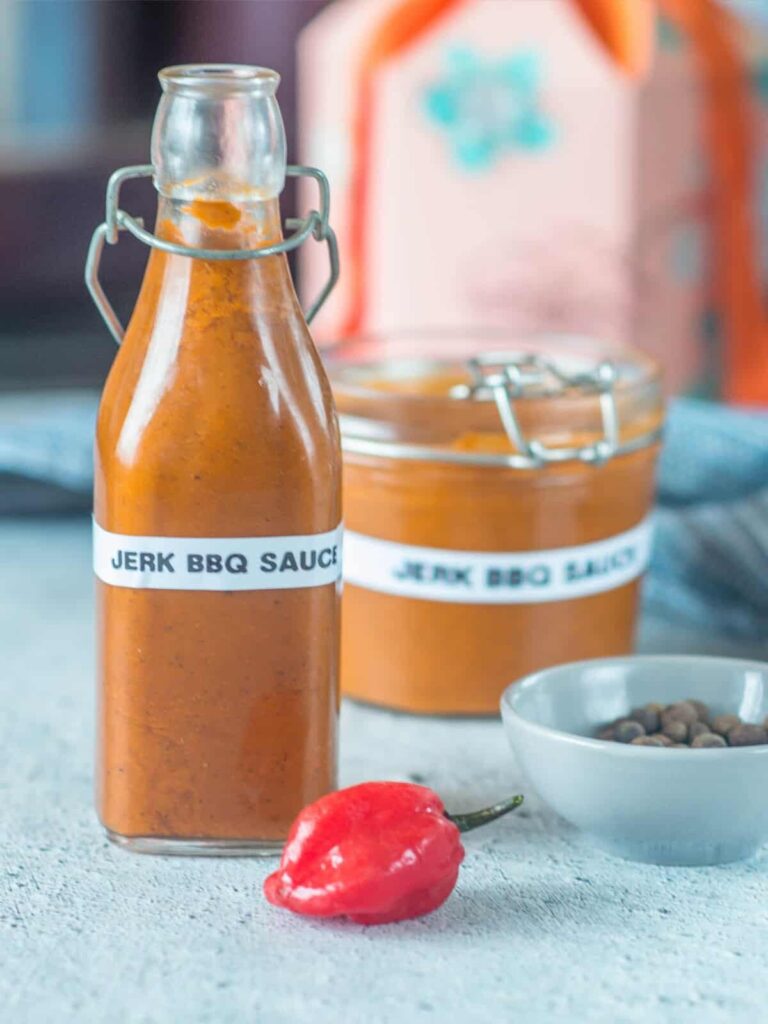
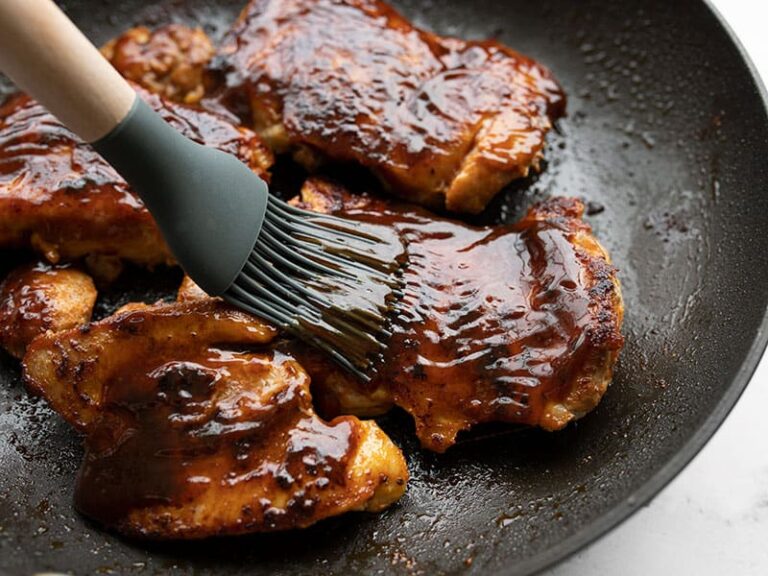
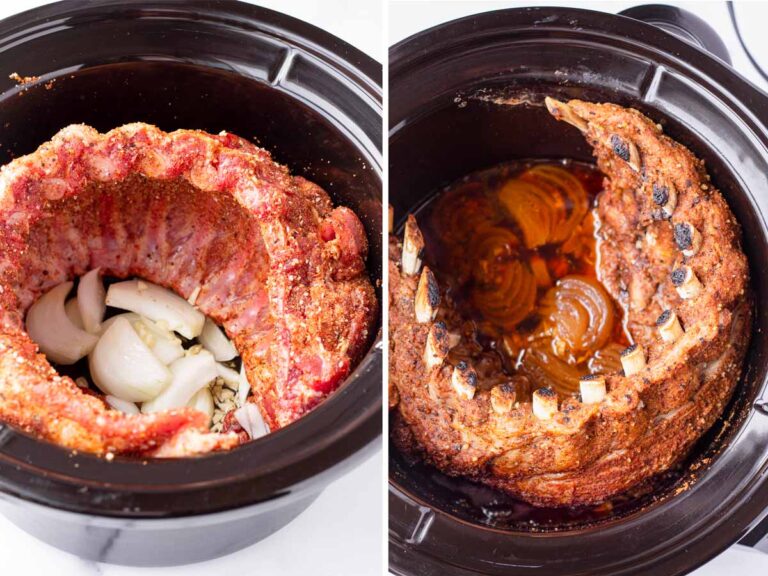
One Comment